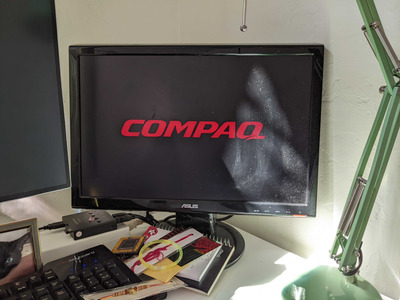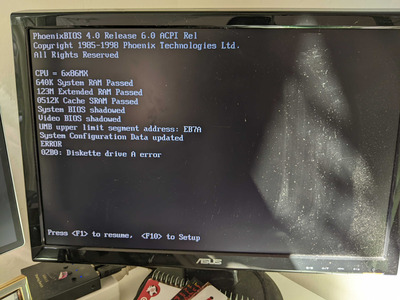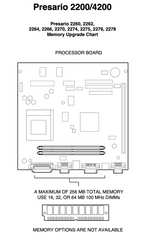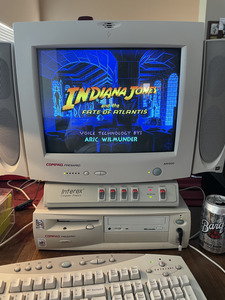First post, by mkaushik
Hi folks,
I came across an ancient Compaq Presario 2262 2266 (edit: corrected model number). I had a similar machine as a kid so I'm really motivated to fix it.
This machine has a Cyrix-M2 300MHz CPU, 32 MB RAM, no HDD yet. The machine powers on, but there's no POST/video out at all.
I inspected the motherboard visually for any obvious defects / bulging capacitors but couldn't find anything.
Things I've tried so far:
- Replaced CMOS battery
- Verified jumper settings for Clocks / Freq
- Reseating memory module in either DIMM slot.
Other possible problems I can think of:
- Bad power supply :
It seems to have a custom power supply that's not AT or ATX compliant. I found the following post about this PSU that suggest it's a Compaq-custom "ATPWR" PSU https://superuser.com/questions/1249425/how-t … power-connector.
I tried looking for ATPWR pinout voltages and came across the following post, but the pinout voltages I'm seeing don't match what's listed in that post:
https://forums.anandtech.com/threads/i-need-h … -supply.528508/
In particular, the wire colors for Pin 2 and Pin 9 are different, and I see +5V on Pin2 (instead of "No wire") and 0.25V on Pin 9 (instead of -5V). The 0.25V looks suspicious. - Corrupted BIOS
Sometimes the BIOS image can get corrupted on some motherboards and prevents POST. But I can't find a BIOS image anywhere for this board.
I'd have to find a Presario 2266 owner who can dump their BIOS image, and then use a chip programmer to reprogram the BIOS.
EDIT: I also got a stick of 256 MB PC-100 RAM from another machine and tried that in place of the 32MB PC-100 RAM that came with this machine, it made no difference. I’m not convinced this swap test was valid though, since this machine takes a max of 256MB across two DIMM slots, maybe it can’t handle a single 256MB DIMM.
Any other information / suggestions would be appreciated. Thanks in advance!




